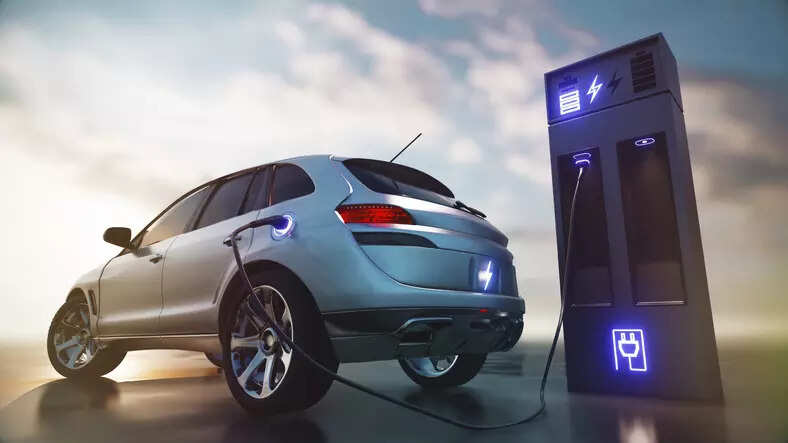The report indicates that fuel cell electric vehicles (FCEVs) have not yet entered the Indian market and BEVs will continue to lead in the near term.
 Battery electric vehicles (BEVs) are expected to continue dominating the Indian EV market in 2025, while plug-in hybrid electric vehicles (PHEVs) are projected to account for only 0.1 per cent of sales.
Battery electric vehicles (BEVs) are expected to continue dominating the Indian EV market in 2025, while plug-in hybrid electric vehicles (PHEVs) are projected to account for only 0.1 per cent of sales.“>
New Delhi: Passenger electric vehicle (EV) sales in India are expected to grow by around 40 per cent in 2025 to reach 1,38,606 units, up from 99,004 units in 2024, according to estimates released by market research and consulting firm Frost & Sullivan.Battery electric vehicles (BEVs) are expected to continue dominating the Indian EV market in 2025, while plug-in hybrid electric vehicles (PHEVs) are projected to account for only 0.1 per cent of sales. The report indicates that fuel cell electric vehicles (FCEVs) have not yet entered the Indian market and BEVs will continue to lead in the near term.“SUVs and sub-compact SUVs drive the growth of EV sales in India,” the report noted. As per 2024 data, Tata Punch, Tata Tiago, Tata Nexon, MG Comet, and MG Windsor were the top five EV models in terms of unit sales. Tata Motors led OEM sales in 2024, followed by JSW MG Motor India, Mahindra & Mahindra, BYD India, and PCA India (Citroen).
The forecast for 2030 shows that EV sales could reach close to 7 lakh units under a baseline scenario. The report identifies Tata Motors, Mahindra & Mahindra, and MG Motor as the leading competitors in the space, operating with different business models.
“EV models will have driver-assist features in premium segments in the near term, however, in the long-term autonomous fleets will operate in gated communities,” the report stated. It further noted that original equipment manufacturers (OEMs) will have to be flexible in their strategies depending on market conditions and charging infrastructure.The report highlights that the Indian EV ecosystem has evolved with the support of various government initiatives such as FAME I, FAME II, Production-Linked Incentive (PLI) scheme, PM eBus Sewa, and PM eDrive. The FAME I scheme launched in April 2015 with a budget of ₹795 crore focused on early adoption, followed by FAME II in April 2019 with a budget of ₹11,500 crore to support mass adoption. The PLI scheme introduced in 2021 aims at manufacturing localisation with a ₹44,000 crore outlay.“Government support is not limited to EV sales but is also focusing on all type of applications such as e2W, e3W, eBuses and charging infrastructure,” the report said.
According to the report, India currently has over 25,500 public charging stations hosting about 60,000 connectors. Karnataka, Maharashtra, Delhi, and Tamil Nadu account for the highest number of installed EV chargers. To support future EV penetration, the country will require one charging connector for every five EVs by 2030.
On the manufacturing side, the report lists critical challenges such as dependence on imported raw materials for batteries including lithium, nickel and cobalt, limited domestic cell manufacturing capability, and high reliance on battery management systems and power electronics from Chinese, Japanese, and Korean firms.
The report also outlines that battery recycling, advanced power electronics, 800V architecture, vehicle-to-grid integration, battery swapping systems, and inductive charging are among the next set of technologies to watch in India’s EV transition.
The EV market in India is also expected to see the introduction of new technologies such as range extenders and hybrid fuel solutions combining ethanol and battery. The report cites strong indications of the introduction of PHEVs and extended range EVs (eREVs) in the Indian market.
Join the community of 2M+ industry professionals.
Subscribe to Newsletter to get latest insights & analysis in your inbox.
All about ETAuto industry right on your smartphone!
- Download the ETAuto App and get the Realtime updates and Save your favourite articles.




